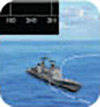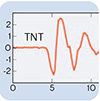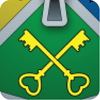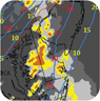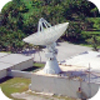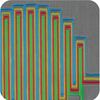Publications
Tech Notes
Tech Notes report on technical accomplishments and capabilities of MIT Lincoln Laboratory.
Localizing Ground-Penetrating Radar |
|
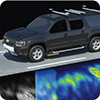 |
An innovative ground-penetrating radar that maps underground geological features provides autonomous vehicles with real-time localization. |
Multisystem Simulation with T2OURNAMINT
 |
Battle theater simulation enables operational radar and electronic support systems to be pitted against jammers and missile seekers under realistic engagement scenarios. |
Aluminum as a Fuel
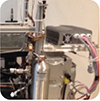 |
A novel aluminum fuel that has many attractive features could replace lithium-ion batteries in several applications. |
Small Airport Surveillance Sensor
 |
A low-cost radar surveillance system provides airport tower controllers with improved situational awareness of aircraft at the airport and in the nearby airspace. Full Tech Note |
Polarimetric Co-location Layering
 |
A novel algorithm exploits polarimetric radar signals to filter sea clutter returns from object detections. Full Tech Note |
Simultaneous Transmit and Receive Phased Arrays
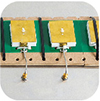 |
A proposed new architecture may enable simultaneous transmit and receive within a digital phased array. Full Tech Note |
Video-Rate Microwave Imaging for Concealed-Threat Detection
 |
A flexible, modular imaging system can rapidly detect threats concealed under clothes or hidden in bags. |
Strike Group Defender: The Missile Matrix
Wind Turbine Interference-Mitigation Study
Adding Automation and Decision Support Capabilities at
the Reagan Test Site
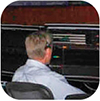 |
New software tools provide operators with automated decision support for directing sensors during increasingly complex tests conducted at the Reagan Test Site. |
Reagan Test Site Optics Modernization Program
Self-Defense Distributed Engagement Coordinator
Telemetry Modernization with Open Architecture Software-Defined Radio Technology |
|
 |
Lincoln Laboratory is conducting a software-defined radio technology development program to improve the way telemetered information is collected and processed. |
Airborne Collision Avoidance System X |
|
 |
A next-generation onboard safety system that uses a new approach to collision avoidance logic reduces mid-air collision risk and extends collision avoidance protection to new aircraft classes. |
Wide-Area Chemical Sensor |
|
 |
A highly sensitive sensor rapidly detects and measures concentrations of target gas molecules within the atmosphere at long ranges to warn of potentially hazardous chemical releases. |
Curled Microelectromechanical Switch |
|
 |
Curling the electrode of a microswitch virtually eliminates sticking and dielectric charging, leading to more consistent operation and longer lifetimes. |
Lunar Laser Communication System |
|
 |
A laser communication system that achieves record-high data transmittal rates could expand what’s possible for future science missions to the Moon and beyond. |
Airborne Sense and Avoid Radar Panel |
|
 |
An antenna designed for sense-and-avoid systems for unmanned aircraft may not only help open the national airspace to unmanned air vehicles but also transform the design of wide-bandwidth radar systems. |
VOCALinc |
|
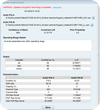 |
Automated speaker recognition software provides an accurate, objective, consistent, and efficient tool for conducting speaker comparisons. |
Haystack Ultrawideband Satellite Imaging Radar |
|
 |
A ground-based, long-range, dual-band sensor that can daily generate very-high-resolution radar images of space objects has the potential to significantly improve our knowledge of the space environment. |
Micro-sized Microwave Atmospheric Satellite |
|
|
|
MIT Lincoln Laboratory in collaboration with the Space Systems Laboratory at MIT campus has developed a prototype nanosatellite that could make weather monitoring less expensive. This Micro-sized Microwave Atmospheric Satellite, or MicroMAS, was launched on 13 July aboard a spacecraft making a supply delivery to the International Space Station. MicroMAS will then be deployed into orbit to take measurements of atmospheric temperature. Full Tech Note › |
Photoacoustic Sensing of Explosives
|
Structured Knowledge Space
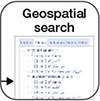 |
This multifaceted end-to-end software system enables increased exploitation of a vast store of intelligence and military reports and documents that had previously been largely unsearchable. This technology was named a 2013 R&D 100 Award winner. Full Tech Note |
Lincoln Open Cryptographic Key Management Architecture
|
Route Availability Planning Tool
|
Wavelength Beam-Combined Laser Diode Arrays
|
Wide Field-of-View Curved Focal Plane Array
|
Airborne Ladar Imaging Research Testbed
|
Multifunction Phased Array Radar Panel |
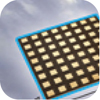
An innovative design exploits dual polarization and digital beamforming to provide a radar solution for simultaneous aircraft surveillance and weather sensing. This technology, a 2011 R&D 100 Award winner, also received an R&D Magazine's Editor's Choice Award. |
Reagan Test Site Distributed Operations
|
Miniature Radio Frequency Receivers
|
Next-Generation Incident Command System
|
Orthogonal Transfer Array: Enabling wide-field imaging
|
Superconducting Nanowire Photodetector Arrays
|
More Tech NotesRunway Status LightsPreventing runway incursions that lead to accidents has been on the National Transportation Safety Board's "Most Wanted List" for nearly two decades. To prevent incursions on airport runways, MIT Lincoln Laboratory developed a status lights system that uses existing airport surveillance technology in conjunction with advanced data-fusion techniques and state logic. This technology won a 2010 R&D 100 Award. Full Tech Note (pdf) › Parallel Vector Tile Optimizing LibraryResearchers at MIT Lincoln Laboratory
developed the Parallel Vector Tile
Optimizing Library to address a Nonlinear Equalization for Receiver Dynamic Range ExtensionMIT Lincoln Laboratory has achieved significant increases in receiver dynamic range by applying nonlinear equalization techniques. Full Tech Note (pdf) › |
Digital Focal-Plane ArraysLincoln Laboratory's digital focal-plane array technology is improving the long-range infrared capabilities of detectors used in wide-area imaging and surveillance applications. This technology won a 2010 R&D 100 Award. |
Specialized avalanche photodiode arrays enable adaptive optics usesAdaptive optics requires detectors with high fill factor—as an incident light spot shifts, so does the pattern of detector responses. Lincoln Laboratory has demonstrated an array of Geiger-mode avalanche photodiodes specifically tailored for adaptive optics uses. This technology won a 2010 R&D 100 Award. |
Extended Space Sensors ArchitectureLincoln Laboratory is demonstrating a service-oriented network architecture that enables the space community to share information and services from the varied systems of the Space Surveillance Network. Full Tech Note (pdf) › |
CANARY: Technology for rapidly identifying biological agentsThe need for rapid, sensitive identification of biological agents is being addressed by Lincoln Laboratory with unique instruments that use the Cellular Analysis and Notification of Antigen Risks and Yields (CANARY) technology. PANTHER: Rapidly identifying biological agents in aerosolsThe threat of airborne hazardous biological agents within a building or in locations of high population density stresses the need for rapid, sensitive identification of the responsible biological agents. Lincoln Laboratory developed the Pathogen Analyzer for Threatening Environmental Releases to provide rapid bioidentification. This technology won a 2011 R&D 100 Award. |
Technology Transfer: A vital part of the Laboratory’s missionLincoln Laboratory's technology transfer activities contribute significantly to the expansion of scientific knowledge and the promotion of industry solutions to defense and civil sector problems. Full Tech Note (pdf) › |
Multiple-Antenna Techniques for Wireless CommunicationsMultiple-antenna technology is a rich area of research. Whether for future military wireless networks, soldier radios, autonomous sensors, or robotics, the demand for improved performance may be met with multiple-antenna communication links and the advanced technology making those links effective. |
Micropumps: Innovations to transport fluids in microchipsMicrofluidics, the science of systems that can manipulate extremely small volumes of liquids, has been named by MIT Technology Review as one of the ten technologies that will change the world. Full Tech Note (pdf) › |
top of page



